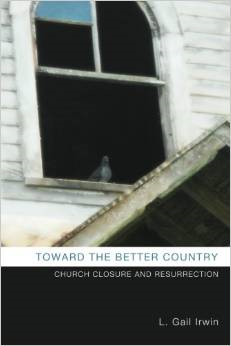Recently I visited a nearby country church with a tumultuous history. Built in a burg called Klondike, it was originally a Catholic church. In the 90’s, the building was hit by lightening. The volunteer fire department bravely climbed up into the attic and put the fire out, at some risk to their own lives. Repairs were made and the church went on.
But a few years later, in 2005, the Diocese closed the church, and its members migrated to another nearby parish. The building sat empty for awhile until two women bought it and tried running a bakery out of the church kitchen.
When that tanked, a nearby family purchased it and decided they would form a new congregation in the building. They hired a preacher, printed an article in the paper and invited the neighbors. A few showed up.
But just as traffic began to pick up, another disaster hit: an arson who had started a series of fires in the area broke into the building and lit one in the chancel. Once again the fire department was called. The fire charred the walls of the sanctuary and rose up into the steeple, but the building was not lost.
Without enough insurance, but with determined owners and well wishing neighbors, money was raised and repair on the building was carried out by volunteers. During the restoration, the little band met in an outdoor open shelter, which was cloaked in thick plastic during the winter months.
Today, the building looks beautiful, inside and out. My friend Michael is its current preacher. A forty-something African-American pastor from Cleveland, Michael came to northern Wisconsin to work as a Christian radio announcer, and has now found himself moonlighting as the church’s spiritual leader.
The day I visited, there were about 25 in worship, despite the sub-zero temperatures outside. The sanctuary was cheerfully adorned with Christmas poinsettias. A keyboard player accompanied us on “Softly and Tenderly”. Then she pulled out a guitar and led us in a cowboy version of “Were You There When They Crucified My Lord?” Michael, in his conversational style, preached to a room full of pink cheeks and white hair, wondering aloud what it would be like if white church leaders called up black church leaders to just talk about the racial tensions in Ferguson. He called upon us to remember that Christ died “just for you”, and urged us, out of gratitude for our own salvation, to reach out in community toward others.
After worship, we gathered in the basement for coffee. There, a church leader named Don told me the story of his church’s multiple encounters with disaster and closure. The more he told, the more fervent he became in the telling. It wasn’t religious fervor, exactly, but more like wonder at the persistence and hard work of so many people in the tiny Klondike community who have cared for their disaster-prone building.
Without a a denominational affiliation, a permanent pastor or even sturdy walls, this community is determined to preserve its spiritual gathering place. Is it possible that something beyond human tenacity is at work here?
I have written previously about resilience in churches. Sometimes resilience is the result of adaptation and flexibility, and sometimes it comes from sheer stubbornness. But there may be churches that are resilient because they are just on fire with the Holy Spirit.













